- Home
- Penelope Lively
Judgment Day
Judgment Day Read online
Also by Penelope Lively
Fiction
GOING BACK
THE ROAD TO LICHFIELD
NOTHING MISSING BUT THE SAMOVAR AND OTHER STORIES
TREASURES OF TIME
NEXT TO NATURE, ART
PERFECT HAPPINESS
CORRUPTION AND OTHER STORIES
ACCORDING TO MARK
PACK OF CARDS:
COLLECTED SHORT STORIES 1978–1986
MOON TIGER
PASSING ON
CITY OF THE MIND
CLEOPATRA'S SISTER
HEAT WAVE
BEYOND THE BLUE MOUNTAINS
SPIDERWEB
Nonfiction
THE PRESENCE OF THE PAST:
AN INTRODUCTION TO LANDSCAPE HISTORY
OLEANDER, JACARANDA:
A CHILDHOOD PERCEIVED
A HOUSE UNLOCKED
Copyright © 1981 by Penelope Lively
All rights reserved. No part of this book may be reproduced in any form or by any electronic or mechanical means, including information storage and retrieval systems, without permission in writing from the publisher, except by a reviewer, who may quote brief passages in a review. Any members of educational institutions wishing to photocopy part or all of the work for classroom use, or publishers who would like to obtain permission to include the work in an anthology, should send their inquiries to Grove/Atlantic, Inc., 841 Broadway, New York, NY 10003.
First published in 1981 by
Doubleday and Company, Garden City, New York
Printed in the United States of America
All characters in this book are fictitious, and any resemblance to persons living or dead is entirely coincidental.
Material on pages 91 and 92 from the Good News Bible.
Old Testament: Copyright © American Bible Society 1976.
New Testament: Copyright © American Bible Society 1966, 1971, 1976.
Extracts from the Authorized Version of the Holy Bible, which is Crown Copyright, are with permission.
FIRST GROVE PRESS EDITION
Library of Congress Cataloging-in-Publication Data
Lively, Penelope, 1933–
Judgment day / Penelope Lively.
p. cm.
ISBN 9780802197382
1. Church architecture—Conservation and restoration—Fiction.
2. Women—England—Fiction. 3. Pageants—Fiction.
4. Villages—Fiction. 5. England—Fiction. I. Title.
PR6062.I89J8 2003
823'.914—dc21 2003041759
Grove Press
841 Broadway
New York, NY 10003
03 04 05 06 07 10 9 8 7 6 5 4 3 2 1
Chapter One
First of all, the place.
Laddenham. A village long detached from its origins, dormitory satellite of an expanding country town known for light engineering, London overspill, and an intractable traffic problem. Its name hitches it still to a past. That, and a few buildings lingering here and there amid Wates and McAlpine estates, bulbous thirties semis, Victorian terraced cottages and seventies “executive-style” developments. A muddled place—its associations incoherent, its strata confused. Ugly for the most part, but shot here and there with grace: an avenue of old limes, a Georgian house in the High Street, a cottage-lined alley offering a slice of blue-distanced landscape. The church.
The church. St. Peter and St. Paul. Perilously sited, nowadays, beside the Amoco garage, its gray stone extinguished by lime green and tangerine plastic bunting flapping along the perimeter of the adjoining forecourt. On the other side, the George and Dragon's car park presses up tight against the churchyard wall. Cigarette packets and crumpled crisp bags twinkle in the long grass around the gravestones. The effect of this juxtaposition is that what must once have seemed so large, so solid, so impregnable, now squats small and a little apologetic: a pleasing anachronism, of architectural interest. Time has juggled the order of things.
The church's own chronological confusion, of course, is absolute. Airy Dec. east window, sterner Perp. to right and left, Victorian stained glass, Norman tympanum over the west door—uncouthly carved whale and Jonah from an age when symbolism came in pictures, not in words.
In a literate age, the symbolisms are more obscure. The Doom over the crossing arch, for instance, the fourteenth-century wall painting that is the church's glory and surprise, puzzles members of the congregation today. Those queerly bundled figures on one side, their form barely discernible (the plasterwork has not been restored}, those other gray statuesque forms sitting up in, apparently, bathtubs. Those red monkeyish things with—toasting forks, could it be? Angels to the left, sinister and spectral figures to the right; a rising or a falling; a golden glow (despite the faded pigments} or a dark writhing obscurity. In any case, the whole thing is very difficult to make out and perhaps uncomfortable if studied in detail.
George Radwell, the vicar, coming into the church on a June morning, was surprised to see a woman standing in the nave staring intently at the painting. A tall, bony young woman with stringy brown hair wearing jeans and a cotton jersey, a stranger, he thought, no one local, until she turned and glanced at him and he recognized the thin face and large mouth of the new woman next door, the one with the white mini and two children and a husband said to be something important at United Electronics. She stood there in a shaft of sunlight, bathed in gold like a stained-glass Virgin, bared her teeth at him in, apparently, greeting, and turned back at once to the painting.
He cleared his throat. “Ah,” he said. “You must be, er …” and she paid him no attention at all. He was dismissed.
Clare Paling saw a sandy-haired man hovering at the doorway, a man of forty odd with the papery red skin of the very fair, blinking and shuffling and somehow inspiring distaste even at that range and on a translucent summer morning. Oh lor, she thought, the vicar of course, him from next door, and sweetly beamed before returning to the painting.
George took four steps left to the font and fiddled with the cover. Mrs. Paling continued to study the Doom. He went over to the organ and shuffled the pile of sheet music. Then he marched down the nave and launched into conversation. Disastrous, as it was to turn out, conversation.
Ah, he said, you must be Mrs. Paling, my churchwarden mentioned, Sydney Porter, lives in the corner house, possibly you've come across, also I've noticed the car, nice to have children around, not that I've been twitching the lace curtains, don't think. He laughed; the silly, snorty laugh that always came when he was least sure of himself. Settled in all right, I hope, he continued, very friendly place Laddenham, quite a bit going on one way and another, madrigal society meets at, er, flourishing adult whatsit classes I'm told, cricket if your husband plays, thought he looked as if possibly, anyway sure you'll find plenty, lot of redecorating I expect, these big Edwardian houses, vicarage badly in need of, know the area already perhaps?
And she ignored all this, not even looking at him most of the time, engrossed still by the Doom.
“Fourteenth century, I suppose,” she said. “It's very like the one at North Leigh, isn't it? Same hand, I wonder? And the Weighing of Souls at South Leigh. The colors are remarkable.”
George mumbled something. Said he always found it a bit depressing. Made or tried to make a joke about red devils that she didn't follow. Aeroplanes? she said, staring, sorry I don't quite … R.A.F. base, he persisted, Wilierton, ten twelve miles away, aerobatic stuff. Ah, she said, really? Moving off now to examine the screen, putting out a thin hand with long clean unpainted fingernails to touch for a moment the wooden foliage, the worn gilding of the tracery.
He drifted after her to the font, saying things. Once she turned to him and bared her teeth once more; a conversational response, it seemed
to be. He could see very thin pointed breasts nudging at her jersey when she squatted down to examine the carvings.
She said, “Splendid Tree of Life. I say, I do like that. Apostles. Christ in Majesty. The Lamb. What's this? Oh, it must be the Annunciation. Rather knocked about—Cromwell, I suppose. Twelfth century, Pevsner thinks. Very nice too.” She stood up.
George regarded the font. It was old, Miss Bellingham said. Miss Bellingham went on about carvings and things, a bit like this woman. Otherwise this woman wasn't like Miss Bellingham at all, who was treasurer of the Parochial Church Council and something of a busybody and had a face like the back of a bus. Mrs. Paling wasn't pretty at all, but she was…
She made you think about sex, not to put too fine a point on it. “Pevsner?” said George. “Can't for the moment place … Yes, twelfth century, that's right.” He continued to regard the font with his head slightly on one side and the assessing expression of a person in an art gallery. It didn't feel right; a church isn't an art gallery; he had never looked at the font like that before.
Mrs. Paling gave him the toothy grin again. “Never mind,” she said. “Well, I must go.” She headed for the door; he was dismissed once more.
He beat her to the door, opened it. “So glad we've met at last. Must come in for a glass of, er. And look, don't let the children keep you from the Sunday service, we welcome children, everyone brings them, babies and all, fearful racket sometimes.” The snorty laugh.
She stared at him. “Oh,” she said. “We shan't be coming to services. We're agnostics. Thanks all the same.”
George went scarlet. R.C. he could have dealt with, nonconformist or whatever. Other creeds, no problem—you nodded understandingly, implying breadth and tolerance. Or people who weren't anything, for that matter; you evaded their own evading eyes and talked about something else. But such an outright statement of unbelief knocked you sideways. It was provocative, unnecessary.
He snorted. Waved over her shoulder to a passerby to indicate ease and failure to be disconcerted. Felt in his pocket for the cigarettes he gave up five years ago. Said loudly, too loudly, “Quite, quite. Well, in that case. Naturally, though, one assumed, seeing you in the church, and interested”—he waved at the font, the Doom, the screen—“interested in all that, well of course one supposed C. of E.”
“Interest in ecclesiastical architecture,” said Mrs. Paling sweetly, “is not restricted to Christians. And infrequent amongst them, I've noticed.”
She was paying him attention now. As much attention as the church furnishings. Almost. She doesn't like me, George thought, she doesn't like me and she doesn't think I matter much. He was in a lather of emotion; resentment and obstinacy and a whole lot else. She had this horsey face and large teeth and long thin thighs and a very small behind. Not a pretty woman, oh no.
He crashed on, his voice coming out shrill now, hectoring. “What I want to know with you people is—what about when you're dead? Then what?”
Mrs. Paling gazed at him. “Then nothing, I've always assumed.”
“Where d'you think you'll go, that's what I want to know.”
“Do you mean,” said Mrs. Paling, “will I be wanting a bit of the churchyard? No thanks.” She began, again, to depart.
“Death,” George insisted, beetroot now to the hairline, “is the problem.”
“Oh no it isn't,” said Mrs. Paling. “It's life that's the problem. That's where you people go wrong. Sorry. No point in a discussion really. Always ends up stalemate”—teeth gleaming at him again—“must go now, ought to be in Spelbury. I like your church. Bye.”
And that, for the time being, was that.
George Radwell had entered the Church because of a typing mistake. Or rather the mistake triggered the process that had sent him, eventually, into St. Stephen's Hall A secretary, in the list briefing the Headmaster of his school on the career intentions of the sixth-form leavers, had substituted “Theological” for “Technical.” “Theological college?” read the Headmaster in surprise, looking with new eyes at the ginger-haired boy whose name he never could recall, whose school career was so undistinguished as to leave him totally anonymous, without even transgressions by which to be remembered. “That's interesting, er, Radwell, now what made you plump for the ministry? I don't think we've had anyone going into the Church for some while. How interesting. We must have a talk about the various colleges—personally I've always thought well of Loxfield though of course St. Chad's is highly regarded.” And on he went, talking now of vocations and deploring, discreetly, the decision of Manners, the Captain of Cricket, to go in for estate agency until at last he came to a halt and George, crimson and desperate, was able to mumble that actually there was a mistake, that actually…
The Headmaster stared at him. “The tech,” he said. “I see. The tech.” He wrote something on a pad; he was no longer engaged. No longer was a man of substance and discrimination finding George interesting, a matter for concern. “Very well, Radwell. Have a word with the Careers Master if there's anything you want to know. Would you ask Tremlett to come in now, please.”
George went home, humiliated. On the way, he thought about the Church; he thought vaguely of carols at Christmas, of the Hallelujah Chorus and Salisbury Cathedral, of forceful manly clerics on television discussion programs. He had nothing against Christianity, he realized, nothing at all. That evening, he told his mother of the incident with the Headmaster, of the mistake. His father had died when he was fifteen. Mrs. Radwell, for whom little that he did was right, for whom carping at him had become an occupation, was silenced for once. She didn't laugh. She reversed her knitting and started on another row. Halfway along the row she said, “You could have done worse. There's some lovely houses, vicarages, for a family. It's a nice sort of job.”
Later that week, George went to see the local priest. He was given a glass of sherry and talked to for an hour and more; he stayed for lunch; the man's wife called him “dear” and later he found himself giving them a hand with some gardening chores. They seemed, to his surprise, to like him.
At the end of term he asked to see the Headmaster again.
He had been worried, before arrival at college, by his lack of either faith or calling, until it dawned on him that those, after all, were what presumably the course was designed to supply. Which indeed it did, more or less. He quite enjoyed it. Whereas at school he had been among the proletariat of the dim, the featureless, the unassertive, here he bloomed a little. There were others with greater inadequacies than his. By his second year he had found a small talent for debate, been elected secretary of the Junior Common Room, and played snooker for the college against a rival establishment. He had also got drunk twice and put his hand inside the shirt of a friend's sister. More importantly, he was bolstered by being a part of something larger than himself; he was no longer alone with his failings.
He spent several years as a curate in north London, where he found himself out of his depth, made to feel a lackluster figure both by his more racy colleagues and the parishioners. He was no good at Youth Clubs and disturbed black teenagers. They made rings round him, as did the jaunty young vicar and his jeaned, chain-smoking wife and her brisk, emphatic community-worker friends. When the Laddenham living came up he fled with relief.
The church, the Amoco garage, and the George and Dragon's car park face what was once the nucleus of Laddenham, the village green, and is now a grassy area called the Green, with bus shelter, a few flower beds and a seat for the elderly provided by the British Legion In Memory of the Fallen. There are also some fine pink-flowered chestnuts and a small play area for young children with revolving wooden contraptions and some swings. The area itself is a triangle, the two long sides formed by rows of houses confronting each other through the chestnuts: a set of large Edwardian villas including the vicarage and the Palings' house, and a line of three- and four-bedroomed semis built in the sixties on the site of a condemned nineteenth-century terrace. The Edwardian houses, which rarely com
e on the market and are the most highly priced in Laddenham when they do, have large gardens with brick walls and too much privet and laburnum. The modern houses, also expensive, have shaven lawns fore and aft, standard roses and small weeping willows. The area is considered the most desirable part of Laddenham, being quiet, free of council housing, and within easy walk of the shops and schools.
Sydney Porter, churchwarden and retired accountant, came out of his house to sweep his doorstep and saw the vicar on the church porch talking to the new woman from number five. He looked away at once, in case either of them should see him, not to get involved, and when he had shaken the mat and done the step and closed the front gate left open as usual by the milkman, the woman was gone and the vicar was standing there in the sun, alone. He went on standing there and Sydney, whose day was already apportioned, as was each of his days, went indoors, a small, spare, neat man, nearer seventy than sixty, accustomed to solitude.
Sydney's house stood at the end of the row of modern ones, on the corner by the church. It was, however, an uneasy juxtaposition since Sydney's was not reconstituted stone with double garage and playroom/granny annex but a bow-windowed brick building with something vaguely marine about its lines, slipped in next to the old terrace in the thirties and no doubt an enviable property then but now much overshadowed by the new houses and the revived prosperity of the Edwardian villas.
Sydney had had to endure the demolition of the condemned terrace and the building of the new houses, twelve years earlier. He had lived through it grim-faced and uncomplaining, dusting daily instead of twice a week, polishing and re-polishing the procession of brass elephants in the hall, flapping and realigning the gardening magazines that lay on the lounge table. Stoically, week by week, he had gathered up and burned the rubbish that drifted from the building site onto his garden. On the night after the bulldozers had moved in he had woken shouting from a nightmare, and had gone to the window to see, in the moonlight, the shattered windowless shells of the few remaining cottages. In the morning, at the office where he then worked, they had been surprised to see him shaking. He wasn't, you'd have thought, a nervous man; a bit close, perhaps, but not nervous. He'd been away for a week or so after that, flu or something, people said, and thereafter appeared his usual self, quiet, composed, reserved.

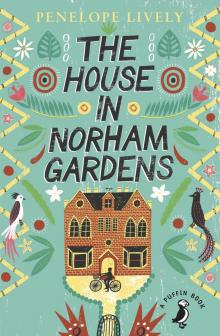 The House in Norham Gardens
The House in Norham Gardens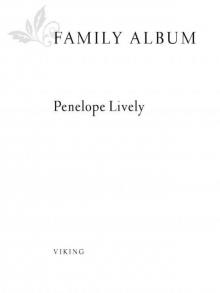 Family Album
Family Album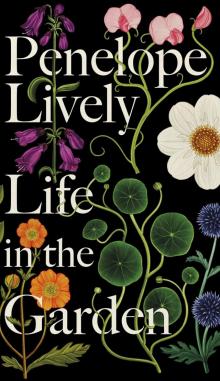 Life in the Garden
Life in the Garden Oleander, Jacaranda: A Childhood Perceived
Oleander, Jacaranda: A Childhood Perceived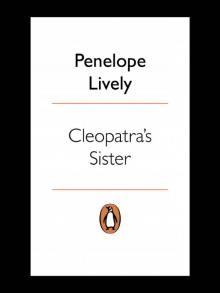 Cleopatra's Sister
Cleopatra's Sister Next to Nature, Art
Next to Nature, Art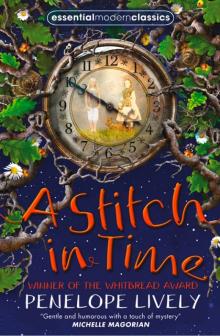 A Stitch in Time
A Stitch in Time Moon Tiger
Moon Tiger The Photograph
The Photograph Heat Wave
Heat Wave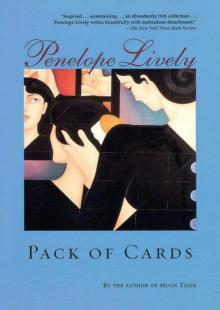 Pack of Cards
Pack of Cards Spiderweb
Spiderweb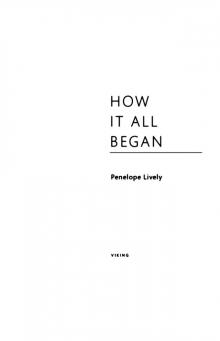 How It All Began
How It All Began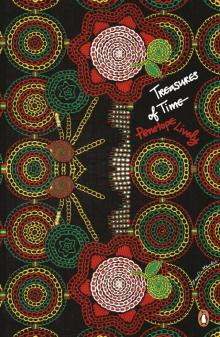 Treasures of Time
Treasures of Time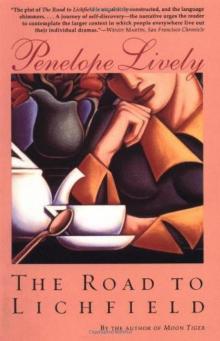 The Road to Lichfield
The Road to Lichfield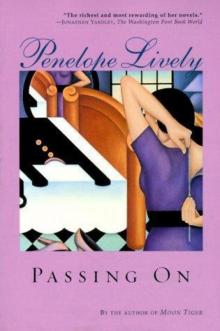 Passing On
Passing On Making It Up
Making It Up Judgment Day
Judgment Day The Purple Swamp Hen and Other Stories
The Purple Swamp Hen and Other Stories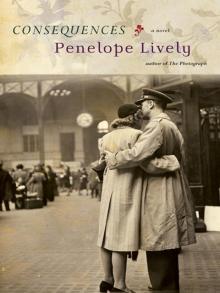 Consequences
Consequences *****Passing On*****
*****Passing On*****